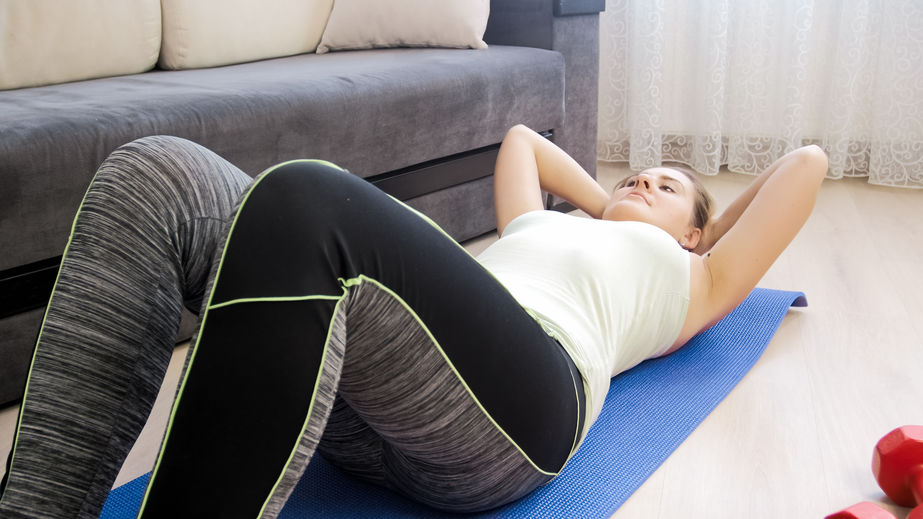By Sean Zucker –
There’s a great deal of confusion on the merits of crunches. Is it effective? Will it give you gnarly, glistening Patrick Bateman abs? Or will it just whack your back? Unfortunately, the answer isn’t that simple. Expert trainers and physicians agree that while there are some benefits of adding crunches to your workout routine, there is also a lot of room for error that can have a devastating impact on your body.
The basic crunch is performed by lying on your back with your knees bent, feet flat on the floor, and then contracting your abs to slowly lift your shoulder blades off the ground an inch or two to ideally activate your core. VeryWell Fit lays out the positive indication that when done correctly crunches may have several potential benefits and could very well aid that six pack. These include strengthening various muscle groups, including the rectus abdominis, which runs from the rib cage to pubic bone; the internal and external obliques that are located along the side and front of the abdomen; and the transversus abdominis, which is the deepest abdominal muscle that spans horizontally across the torso. The site also boosts the exercise’s ability to burn belly fat.
On the flip side, studies have emerged in recent years suggesting these benefits may not outweigh the physical drawbacks of crunches. One study published in Clinical Biomechanics, linked regularly doing crunches to poor spinal health, including intervertebral disc herniation. It specifically cautioned about the potential for spinal degeneration and misalignment in younger people with typically healthier spines.
In 2018 while speaking with Business Insider, Heather Milton, a senior exercise physiologist at NYU Langone Health, amplified Clinical Biomechanics’ recommendation to avoid doing crunches. “Going into exercises like crunches is putting your body in spinal flexion, rather than maintaining a neutral spine,” she cautioned. “There are many ways to strengthen your core. What we usually call the core are the abdominal muscles that support the spine. Our bodies should usually be in a neutral position in terms of the spinal alignment.”
Fitness19 Gyms goes as far as to specify other reasons to strengthen your core through alternative means. The chain adds that crunches fail to target deep abdominal muscles, encourage poor posture and can cause neck and back pain. Worse yet, they suggest the exercise is flat out boring.
The American Council on Exercise claims the major issue regarding crunches isn’t the exercise itself but rather that its generally performed incorrectly. “Proper form is important for this exercise to prevent excessive stress on your low back,” the council’s website explains. “Individuals usually perform this movement too rapidly and recruit the hip flexors to assist with the upward phase. This technique tilts the pelvis anteriorly, increasing the stress on the low back and should be avoided.”
Jenn Sinrich, a writer for Women’s Health, recently committed to doing 50 crunches a day for a month to decipher if they really were the key to a luminous core. While noting that after the 30 days she felt better overall and the experience did help her gain motivation to continually workout, she saw little to no visual improvement in abdominal strength. She warned that the real key to getting abs is through diet, but there’s evidence to support she may have had more success with alternative core exercises as well.
According to another Hearst publication, Men’s Health, there are numerous alternatives available that are just as easy to perform, require little to no equipment and are massively less harmful to your back. These include planks, which are performed by stabilizing your back in a push up like position while remaining as motionless as possible. There is also the old high school favorite mountain climbers, which for those with foggy memories also start in push up position, followed by repeatedly bringing your knees to your chest at a steady pace. The magazine promises these are just as likely to flatten your stomach and build core strength but are far healthier for the lower back.












